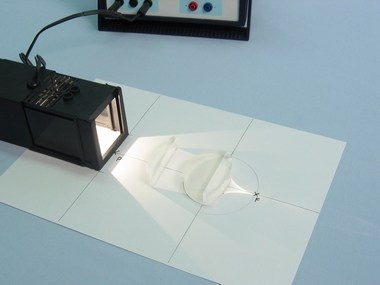Principle
In this experiment, the students should review their knowledge of the light path in the human eye and the accommodation of the eye to near and far objects. From the observation of the inadequate accommodation for divergent incident light using the model eye and therefore the necessity of its correction with the help of a convex lens, they should reach conclusion concerning the appearance of old-age accommodation problems. The experiment gives an understanding of why older people very often require glasses for close reading. This allows a differentiation between this type of defects and the short- and long-sightedness due to inherently flawed eye structure.
The experiment is demanding in terms of the abilities and skills required of the students, particularly in the necessity to extrapolate from the planar model to the real eye.
Benefits
- Multifunctional light box - All-in-one: Can be used for geometric optics on the table, colour mixing and on an optical bench
- Extension with others sets at anytime, no additional light sources needed, recognition value for students
Tasks
What is loss of accommodation in old age? Investigate with the model eye how the problems of accommodation associated with old age can be corrected.



